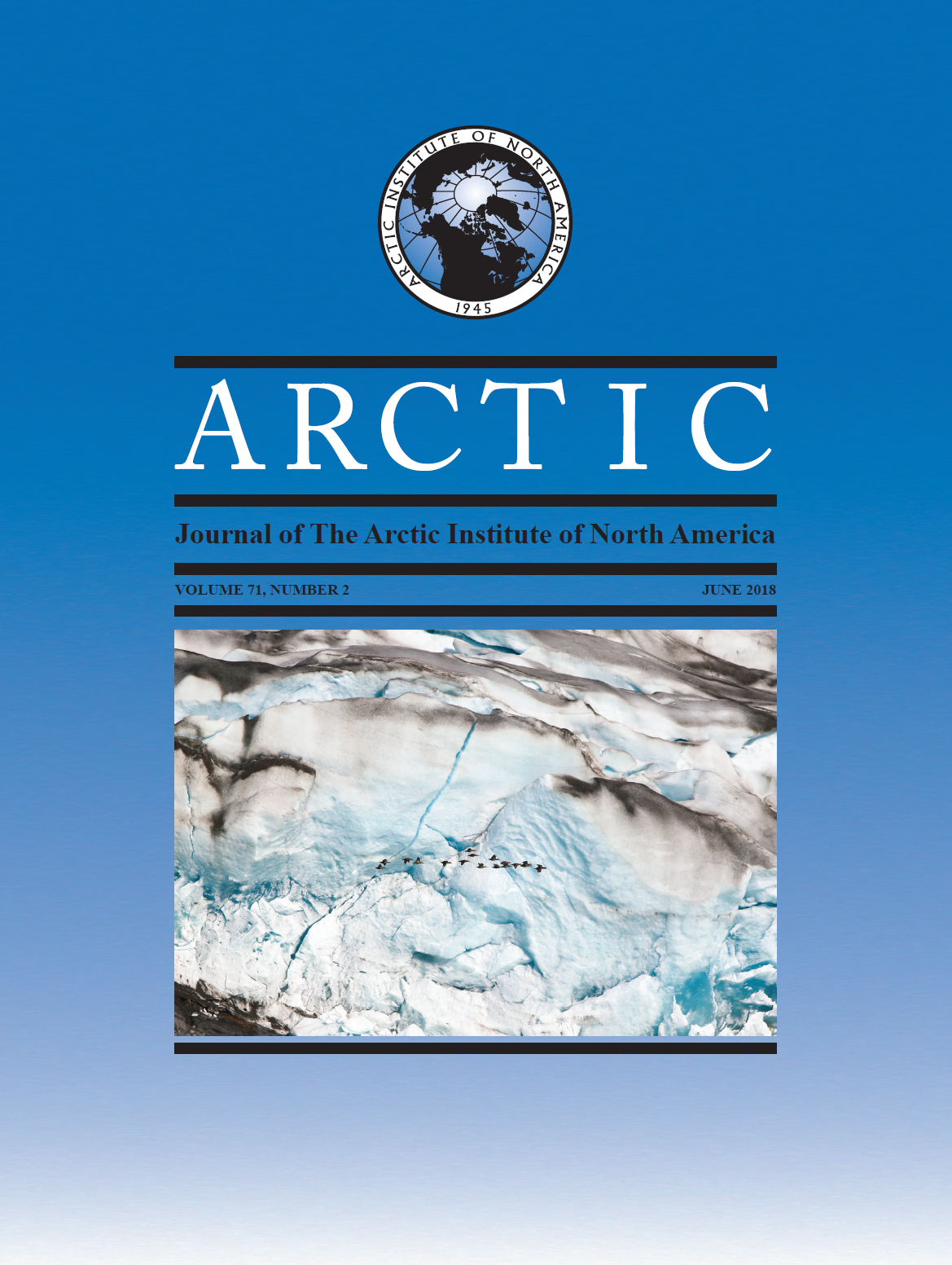Summer Climatic Moisture Balances for Yukon Xerophytic Grassland Slopes and Their Late-Wisconsinan Counterparts: Are Present-Day Grasslands Beringian Relicts?
DOI:
https://doi.org/10.14430/arctic4715Keywords:
Beringia, climate, evapotranspiration, grassland, moisture balance, palaeovegetation, solar radiation, Late Wisconsinan, YukonAbstract
Summer climatic moisture balances (precipitation vs. potential evapotranspiration) for topographic slopes favored by present-day xerophytic boreal grasslands (SSW aspects with 61% – 65% gradients) in southwest Yukon were compared to their unglaciated late-Wisconsinan (14 000 – 12 000 cal yr BP) Beringian counterparts. The purpose was to determine whether present-day grasslands are ecologically plausible Beringian relicts or analogues. The Beringian climate was represented by meteorological stations with average July temperatures 4˚C colder than those of present-day grassland areas; all were from Arctic locations. The most commonly occupied grassland slopes received maximum local solar radiation and likely represented the warmest topographic positions in the landscape. Their summer evapotranspiration demands exceeded the 200 mm moisture supply by 189 mm. The same slopes had late-Wisconsinan summer moisture balances of −57 to −101 mm because of colder and shorter growing seasons. Moisture balances for late-Wisconsinan SSW slopes were similar to those of present-day WNW – NW aspects, which do not support grasslands. Differences in moisture deficits indicated present-day xerophytic grasslands were improbable Beringian in situ relicts or analogues. Alternatively, it was hypothesized that present-day Calamagrostis purpurascens communities developed during the Holocene Thermal Maximum (11 000 – 9000 cal yr BP), whereas Hesperostipa comata communities formed less than 3000 years ago after postglacial migration of the species from central North America.


